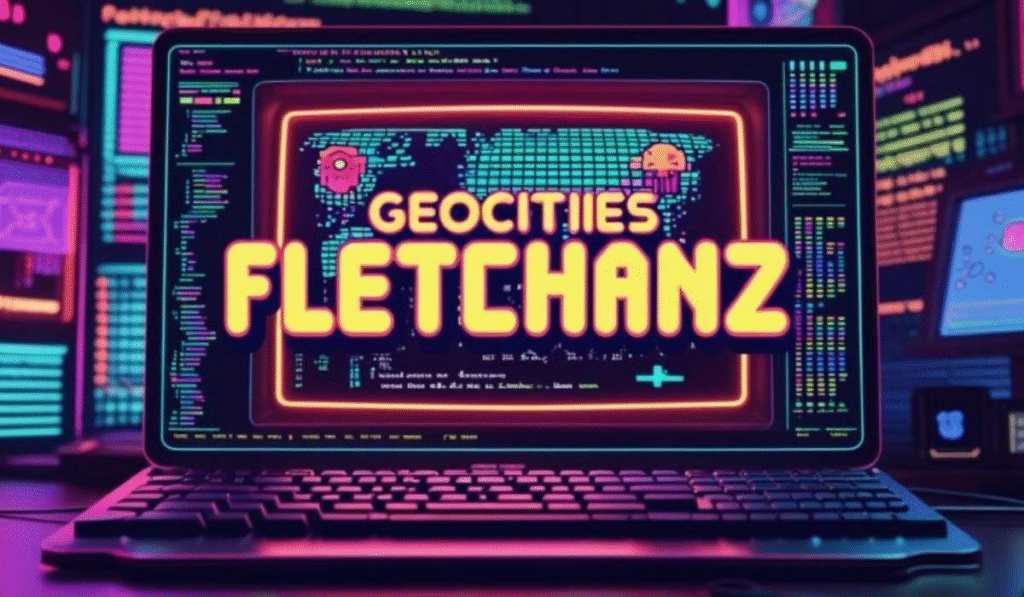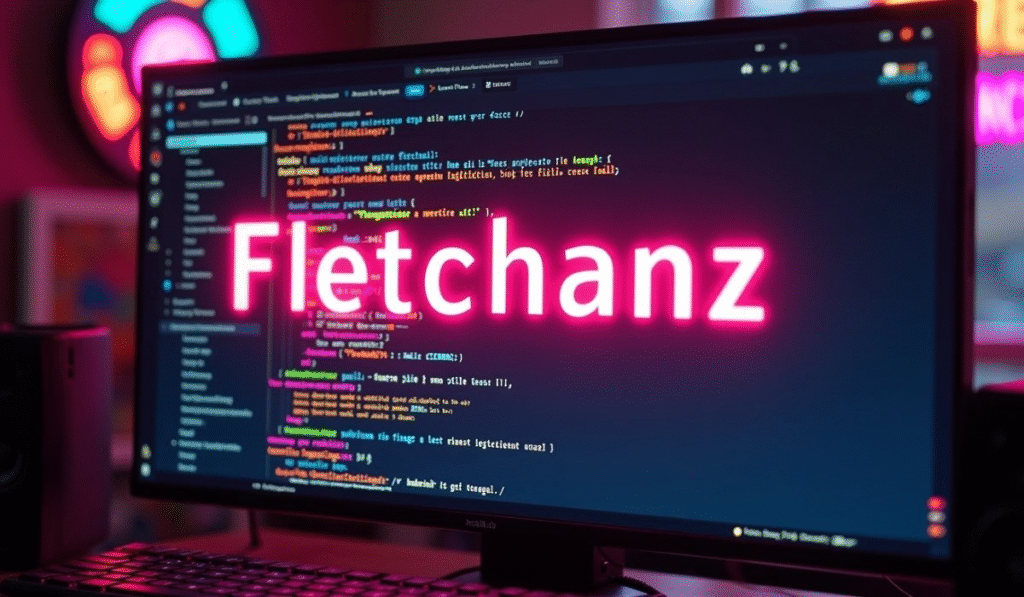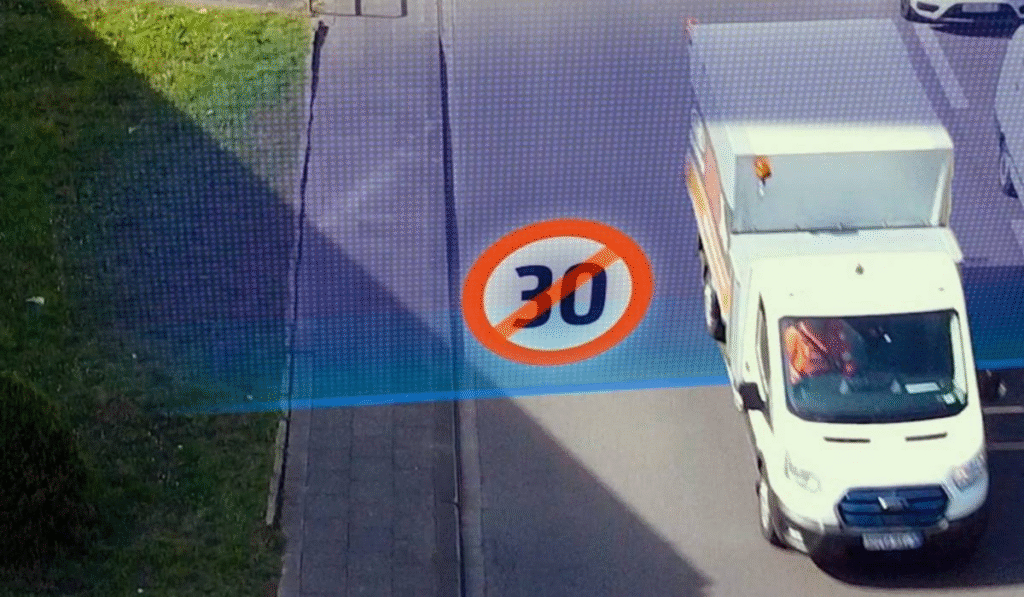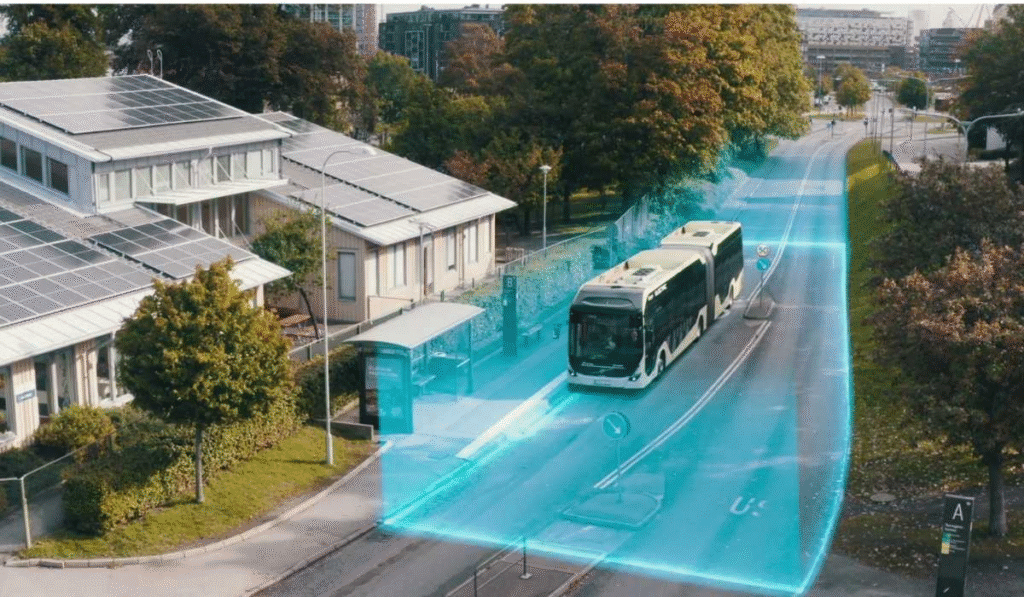Geocities Fletchanz: How Digital History Shaped Today’s Web

The internet that we know today is fast, sleek, and dominated by social media giants. Yet, before the era of Facebook, Twitter, and Instagram, there was a digital frontier where creativity thrived in raw form. That frontier was Geocities Fletchanz. In its prime, Geocities offered individuals a unique space to build their own websites, decorate them with blinking GIFs, background music, visitor counters, and endless lines of HTML code. It was a chaotic yet beautiful mosaic of personal expression that reflected the cultural spirit of the late 1990s and early 2000s. While it might seem like a relic today, the influence of Geocities Fletchanz is deeply embedded in the DNA of modern web culture.
The Origins of Geocities Fletchanz
Geocities was founded in 1994 and quickly became one of the first platforms to allow ordinary internet users to build their own websites without needing advanced programming skills. The service was divided into “neighborhoods,” each one themed around topics like sports, entertainment, or personal hobbies. The Geocities Fletchanz community became a central part of this ecosystem, representing a digital gathering place where individuality and creativity were not just encouraged but celebrated.
At a time when corporate websites were sterile and text-heavy, Geocities Fletchanz sites were bursting with color, creativity, and sometimes overwhelming design choices. Users had the freedom to control every aspect of their webpage, from the fonts and colors to the placement of animated icons and music players. It was this sense of ownership and self-expression that helped Geocities Fletchanz stand out from anything else online.
A Digital Neighborhood of Creativity

One of the defining features of Geocities Fletchanz was its “neighborhood” concept. Instead of websites existing in isolation, they were grouped together into thematic communities. If you were passionate about movies, you might set up your site in Hollywood Boulevard. If you were a tech enthusiast, you could plant your digital home in Silicon Valley. The Fletchanz section became a space where countless individuals experimented with design and storytelling, weaving together personal narratives, fan pages, and resource hubs.
This organization gave Geocities a sense of place. It wasn’t just a collection of random websites—it felt like walking through a neighborhood where every door opened to a unique home. This early approach to online community-building is something we still see today in forums, subreddits, and social media groups. Geocities Fletchanz laid the groundwork for the communal aspect of the internet.
The Role of Self-Expression
Geocities Fletchanz was far more than just a website builder; it was a platform of identity. Users could express themselves in ways that were not possible offline. From fan pages dedicated to favorite TV shows to personal diaries shared with strangers, Geocities gave individuals a chance to have their voices heard.
Unlike today’s social media templates, where profiles look almost identical, Geocities Fletchanz allowed for unlimited customization. Each site reflected the personality of its creator. Bright neon colors, animated text, and playful GIFs might seem outdated today, but in the 1990s, they represented freedom and authenticity. This wave of personal creativity shaped the early internet as a deeply human space, where imperfections added charm rather than detracting from value.
The Technical Learning Curve

While Geocities Fletchanz empowered people to build their own sites, it also encouraged learning. To customize a page, users often had to interact with HTML and, later, CSS. Many amateur coders got their first taste of programming through tweaking their Geocities pages. This was a kind of informal education that would inspire a generation of web developers, designers, and content creators.
For many, the first encounter with source code happened while adjusting a background image or embedding music on a Geocities page. This hands-on exposure gave users confidence in technology and showed them that they could shape the internet themselves. Today’s drag-and-drop site builders owe much to this early do-it-yourself culture cultivated by platforms like Geocities Fletchanz.
Community and Connection
Another defining trait of Geocities Fletchanz was the sense of community it created. Users often linked to one another’s sites, forming webrings—circular networks of related websites that made browsing more personal and interconnected. Guestbooks allowed visitors to leave messages, creating a digital conversation long before comment sections became standard.
These features helped users build lasting connections. In many ways, Geocities was the precursor to the social media we know today. While Facebook encourages users to “like” a post, Geocities encouraged visitors to leave thoughtful notes in guestbooks or join webrings that fostered a sense of belonging. It was less about algorithms and more about authentic human interaction.
The Fall of Geocities

Despite its influence, Geocities Fletchanz eventually fell victim to the changing tides of the internet. Yahoo! acquired Geocities in 1999 for billions of dollars, but the service struggled to adapt to new demands. As social media platforms like MySpace and Facebook gained popularity, Geocities began to feel outdated. Its design aesthetic, once vibrant and cutting-edge, came to be seen as clunky and amateurish.
By 2009, Yahoo! shut down Geocities entirely, deleting millions of personal websites. This moment marked the end of an era and sparked discussions about digital preservation. Entire communities and personal histories vanished overnight. The shutdown revealed the fragility of digital culture and the need for archiving online content to prevent the loss of history.
The Legacy of Geocities Fletchanz
Even though Geocities no longer exists, its legacy lives on. Platforms like WordPress, Tumblr, and even TikTok owe part of their DNA to the spirit of self-expression pioneered by Geocities Fletchanz. The modern emphasis on user-generated content and community interaction has direct roots in these early platforms.
Moreover, internet nostalgia has led to renewed interest in Geocities-style design. Some contemporary designers embrace the chaotic aesthetic of the 1990s as a deliberate rejection of minimalist web trends. Retro-themed projects and digital archives keep the Geocities spirit alive, reminding us that creativity does not always have to be polished to be valuable.
Lessons for Today’s Internet

The story of Geocities Fletchanz provides valuable lessons for the digital age. First, it shows the importance of giving users creative freedom. While modern platforms streamline design for usability, they also limit individuality. Second, Geocities reminds us that digital culture must be preserved. Without archives, entire generations of online expression can disappear in an instant.
Finally, Geocities illustrates that the web is at its best when it is participatory. The early internet encouraged people to build, share, and connect without the filter of algorithms. Reclaiming some of that authenticity could help today’s internet feel more human.
Conclusion
Geocities Fletchanz was more than just a collection of amateur websites. It was a cultural movement, a learning platform, and a foundation for the internet we use today. It represented an era when digital spaces were truly personal, and creativity had no boundaries. While it may be gone, its influence is everywhere—from the design of blogs and forums to the spirit of online communities. By remembering and studying Geocities Fletchanz, we not only preserve digital history but also find inspiration for building a more creative, open, and human-centered web.
Frequently Asked Questions
1. What was Geocities Fletchanz?
- Geocities Fletchanz was a community within the larger Geocities platform where users could build and customize personal websites. It became a hub for creativity, digital experimentation, and online connection.
2. Why was Geocities Fletchanz important?
- It was important because it gave ordinary users the power to express themselves online, experiment with web design, and form communities long before modern social media existed.
3. What happened to Geocities Fletchanz?
- Geocities was acquired by Yahoo! in 1999 and eventually shut down in 2009. The closure erased millions of websites, including those within the Fletchanz community.
4. How did Geocities Fletchanz influence today’s web?
- It influenced today’s internet by pioneering personal expression, online community-building, and user-generated content—concepts that remain central to platforms like WordPress, Reddit, and social media.
5. Can we still access Geocities Fletchanz websites?
- Although the original platform is gone, some archives and digital preservation projects have saved parts of Geocities, allowing researchers and enthusiasts to explore its history.



